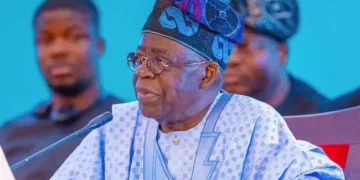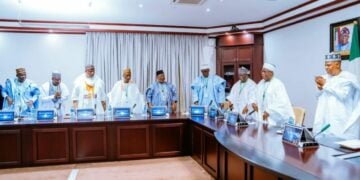Every year, the Africa Magic Viewers’ Choice Awards (AMVCAs) transform from an awards ceremony into a living, breathing fashion exhibition — a red carpet that rivals the glamour of Paris, Milan, or New York. For many Nigerians, the AMVCAs are not just about who won “Best Actor” or “Best Film.” They are about sartorial statements, cultural storytelling through fabric, and unapologetic black excellence.
This year was no different. The 10th edition of the AMVCAs, held in Lagos, proved once again that Nigeria is not just Africa’s entertainment capital, but it is also one of the world’s most innovative and dynamic fashion hubs. The glitz, the audacity, the regality of the garments on display tells a bigger story: the Nigerian fashion industry is undergoing a renaissance, and the rest of the world is finally paying attention.
Nigeria’s soft power is rising, and fashion is a key part of that equation. Just as Nollywood films and Afrobeats have become global exports, Nigerian fashion is becoming an emblem of national pride and international influence. Every outfit worn at the AMVCAs is a potential ambassador, showing the world the richness, elegance, and ingenuity of Nigerian design. And in an age where image and perception are powerful currencies, the ability of fashion to shape global narratives cannot be overstated.
Nigerian Fashion as Cultural Capital
Fashion in Nigeria is more than vanity or spectacle. It is identity, resistance, celebration and big business. In recent years, the Nigerian fashion industry has grown from a cluster of tailors and designers serving local markets to a booming sector with global appeal. According to the Nigerian Export Promotion Council, fashion is one of the top three non-oil exports with the potential to generate billions in revenue and create thousands of jobs, especially for youth and women.
From the intricate hand-woven Akwete of Abia to the richly dyed Adire of Abeokuta and the timeless grandeur of Aso-Oke, Nigerian designers are mining deep wells of heritage and technique to reimagine the future of African fashion. The AMVCAs have emerged as one of the most visible stages where this evolution unfolds before our eyes. Each outfit is a canvas of confidence and creativity. Each designer, a griot of our time, telling stories through seams, beadwork, and silhouettes.
What makes the AMVCA red carpet so compelling is that it is our own, it is Pan-African, it is proudly black, and it is culturally anchored. While international red carpets are often about rigid elegance and cautious minimalism, the AMVCAs are where maximalism and colour thrive. It is where fashion is fearless and theatrical, without losing touch with its roots.
This year, attendees did not hold back. Nana Akua Addo turned heads in a futuristic white number tagged ‘Women in Tech’. Styled by Nigerian creative Adenike Racheal Jewoola of ‘nicholestylish’, the look fused art, tech and energy. Toke Makinwa dazzled in a shimmering, form-hugging piece and Osas Ighodaro, the queen of the red carpet, brought the kind of regality that could command a runway in Paris — sleek, poised, and unapologetically glamorous. Both were styled by celebrity designer Veekee James, who has become the toast of Nigeria’s high society.
For the men, stylistic boundaries were pushed. Neo Akpofure and Enioluwa broke away from standard tuxedos, opting instead for fashion-forward interpretations of menswear that incorporated velvet, embroidery, and brocade. While Vine Olugu and Mike Afolarin pushed the boundaries of colour and style for men.
The stylists, too, deserve accolades. Names like Ugo Mozie, Medlin Boss, Swanky Jerry, Dahmola, and Yolanda Okereke have built entire ecosystems around celebrity styling, creating a ripple effect that influences everyday fashion and retail trends. In many ways, these stylists are cultural curators, shaping how Nigeria is seen both at home and abroad.
Fashion as Economic Force
Beyond the dazzle is an industry with massive economic potential. The Nigerian fashion industry sits at the intersection of creativity and commerce. According to a 2021 report by the African Development Bank, Africa’s fashion industry could be worth $15.5 billion in annual revenue if properly harnessed with Nigeria as a frontrunner.
Lagos Fashion Week, GTCO Fashion Weekend, Arise Fashion Week, and now the AMVCAs are not just events, they are business platforms. Designers like Lisa Folawiyo, Andrea Iyamah, Orange Culture, and Kenneth Ize are exporting Nigerian aesthetics to global markets. Kenneth Ize, in particular, has taken handwoven Aso-Oke to the runways of Paris, collaborating with global fashion houses and dressing international celebrities like Naomi Campbell. While Ugo Mozie shone at this year’s Met Gala from the stables of his Elevensixteen fashion brand, styling celebs like Diana Ross and Scott Evans.
Yet, challenges remain. Access to finance, unstable infrastructure, high production costs, and limited formal training still constrain the sector’s scalability. But what the AMVCAs show us year after year is that the talent is abundant. What is needed is more strategic investment, more institutional support, and a clear roadmap to turn fashion from red-carpet spectacle into sustained economic growth.
One of the most inspiring aspects of the Nigerian fashion explosion is the central role of women. From designers to stylists, models to influencers, women are at the heart of this creative revolution.
Take Veekee James, for example. In less than a decade, she has built a fashion empire from sheer determination, skill, and strategic branding. Her gowns now dominate high-profile events and have earned her celebrity clientele across the continent. Her designs are bold, glamorous, and unapologetically feminine and she represents a new generation of young women redefining what success looks like in the fashion space.
Designers like Tolu Bally, Tubo, and Tope FnR are also breaking glass ceilings, designing for royalty, politicians, and fashionistas across Africa and the diaspora. And beyond the designers, women-led media and influencer platforms from BellaNaija Style to The Style Infidel are shaping conversations and spotlighting trends.
The Future is Fashion
If the AMVCAs have taught us anything, it is that fashion is not just art. It is identity, industry, and influence. As we celebrate the creativity that unfolded on the red carpet, we must also push for structural support for the fashion ecosystem.
The government must develop policy incentives for local production and export, invest in fashion education and technical training and provide access to credit for designers, stylists, and fashion entrepreneurs. Additionally, there must be intentional infrastructure development to support local textile and garment manufacturing.
It is time to move from admiration to action. From slay to strategy. In a world that often underestimates African creativity, the Nigerian fashion industry is holding its own, and then some. The AMVCAs are a mirror reflecting what we already know: we are stylish, we are bold, and we are world-class.
Countries like Italy and France have long leveraged fashion as both cultural identity and economic strategy. Nigeria must do the same. The time has come to treat fashion not as frivolity, but as a serious pillar of economic and diplomatic strategy.
Let no one say again that Nigeria does not have cultural infrastructure. We do. We just need to fund it, scale it, and believe in it. Fashion is our language. Fabric is our heritage. Every stitch, every bead, every silhouette that graced the 2025 AMVCA red carpet is a declaration to the world that Nigeria has arrived, and we are dressed for the moment and the future.





